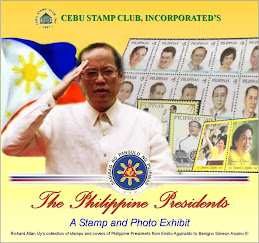Today in Philippine History (Philatelic Edition):
FEBRUARY 24, 1937
The City of Cebu celebrates its Charter Day every 24th of February.
In 1521, the Spaniards headed by Portuguese Ferdinand Magellan arrived in Cebu on April 7, 1521 and befriended the king, Rajah Humabon and gifted the queen, Hara Humamay with an image of the Santo Niño (Holy Child).
Magellan planted a cross as a symbol of the natives embracing Christianity.
After he was killed in battle against Lapulapu on April 27, 1521 in the Battle of Mactan, his fleet left Cebu.
44 years later, on April 27, 1565, Spanish Conquistador Miguel Lopez de Legazpi arrived in Cebu.
He ordered his troops to burn the coastal communities after Rajah Tupas, the king of Cebu and nephew of Rajah Humabon challenged him.
Legazpi established a settlement and named it "Villa del Santisimo Nombre de Jesús" (Town of the Most Holy Name of Jesus), after Juan Camus found the Santo Niño in one of the deserted huts.
When the Americans governed the Philippines, Cebu became a municipality in 1901.
Years later, in 1931, Atty. Gervasio L. Lavilles, a councilor in the Municipal Board of Cebu authored Resolution No. 185, requesting Congress to sponsor a bill converting the Municipality of Cebu into a city. Vicente Rama authored House Bill 1428.
On October 20, 1934, Commonwealth Act No. 58 or “An Act Creating the City of Cebu” was approved.
On February 24, 1937, the City of Cebu was inaugurated.
The Secretary of the Interior, Elpidio Quirino (who would become president in a few years), represented President Manuel L. Quezon in the inauguration ceremonies.
He administered the oath of office to the newly appointed city mayor, Alfredo V. Jacinto, and the appointed members of the city council.
Don Vicente Rama came to be known as the “Father of the Cebu City Charter.”
(Design, concept, stamps and research: Richard Allan B. Uy) All rights reserved
Photo credit: Paul Miaga




















No comments:
Post a Comment